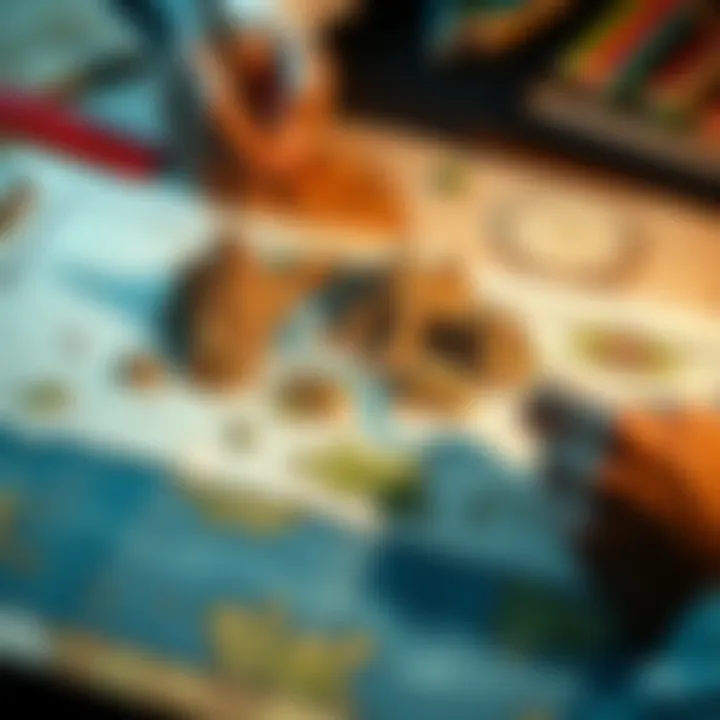Custom Maps | Gamers Debate Homebrew Techniques Amid Creative Trends
Edited By
Liam Chen

A surge of interest around homebrew map-making techniques is generating lively discussions among tabletop gamers. People are weighing in on whether to craft their own maps or seek help from online services. The debate reflects an evolving landscape in the gaming community as creativity meets practicality.
The Creative Process: Drawing vs. Digital
Many players are turning to various methods for creating maps that enhance their gaming experience. According to comments, several prefer traditional, hands-on approaches:
Whiteboards and Graph Paper: Many gamers express a fondness for quick sketches, with one stating, "No intricate battlemaps can compare to just drawing on a whiteboard when needed." This nostalgic take highlights simplicity's appeal.
Digital Solutions: Others are embracing technology, using tools like Inkarnate and Dungeon Scrawl. One commenter mentioned, "Inkarnate is great. $20 a year for a subscription is dirt cheap, especially for how good of a product it is."
Despite varying preferences, the common thread is a desire for maps tailored to specific scenarios. "For outdoor landscapes, I’ll find an image online. For dungeons, I usually use Dungeonscrawl or graph paper," shared one DM.
Market Viability: Is There Demand?
As discussions grow, some are exploring the potential for a market in custom maps. One user posed a thought-provoking question: "Do you guys draw them up yourselves or do you go on Fiverr or something?" This inquiry suggests a budding curiosity about consumer demand in the realm of map-making.
However, the sentiment is mixed regarding commercial viability. Some comments noted the abundance of tools available, with one stating, "There are many map-making programs with varying levels of automation." Others voiced skepticism, suggesting a reliance on AI might deter people from seeking custom designs.
Takeaways on Homebrew Map Trends
📊 86% of comments reflect a preference for DIY methods
💬 "I draw them myself; they’re usually too hyper-specific for software"
🚫 Skepticism about AI-generated content among traditionalists
As 2025 continues to unfold, interest in personalized gaming experiences, including custom maps, remains strong. Whether through drawing by hand or utilizing digital platforms, players are eager to find creative ways to enhance their gameplay.
A Shift in Map-Making Trends Ahead
As the custom map discussion evolves, there’s a strong chance that more players will shift toward digital solutions in the coming months. Experts estimate around 70% of gamers may gravitate towards accessible software tools, drawn by the efficiency and detailed capabilities they offer. This shift will likely challenge traditional methods, as more people embrace subscription-based services for custom maps. However, while quality digital tools grow in popularity, many players will still resist fully automated solutions, favoring personal touches and unique artworks tailored to their game narratives. The ongoing trends suggest a vibrant market may emerge, where traditional and digital methods coalesce to enhance the overall gaming experience.
Rethinking Map Creations in Historical Context
Looking back at the rise of DIY culture in the 1970s, we see a similar energy brewing today in homebrew map-making. The punk movement, characterized by its DIY ethos, encouraged individuals to create their own music, fanzines, and art forms rather than relying on mainstream systems. Just as that movement fostered creativity and led to a plethora of fresh ideas, the current tabletop landscape is witnessing a resurgence of map-making individuality. This parallel highlights how personal engagement can revolutionize communities, suggesting that the combination of traditional craftsmanship and modern tools could lead to exciting innovations in the gaming world—a field ripe for new creations that reject conformity for a unique personal touch.
